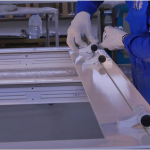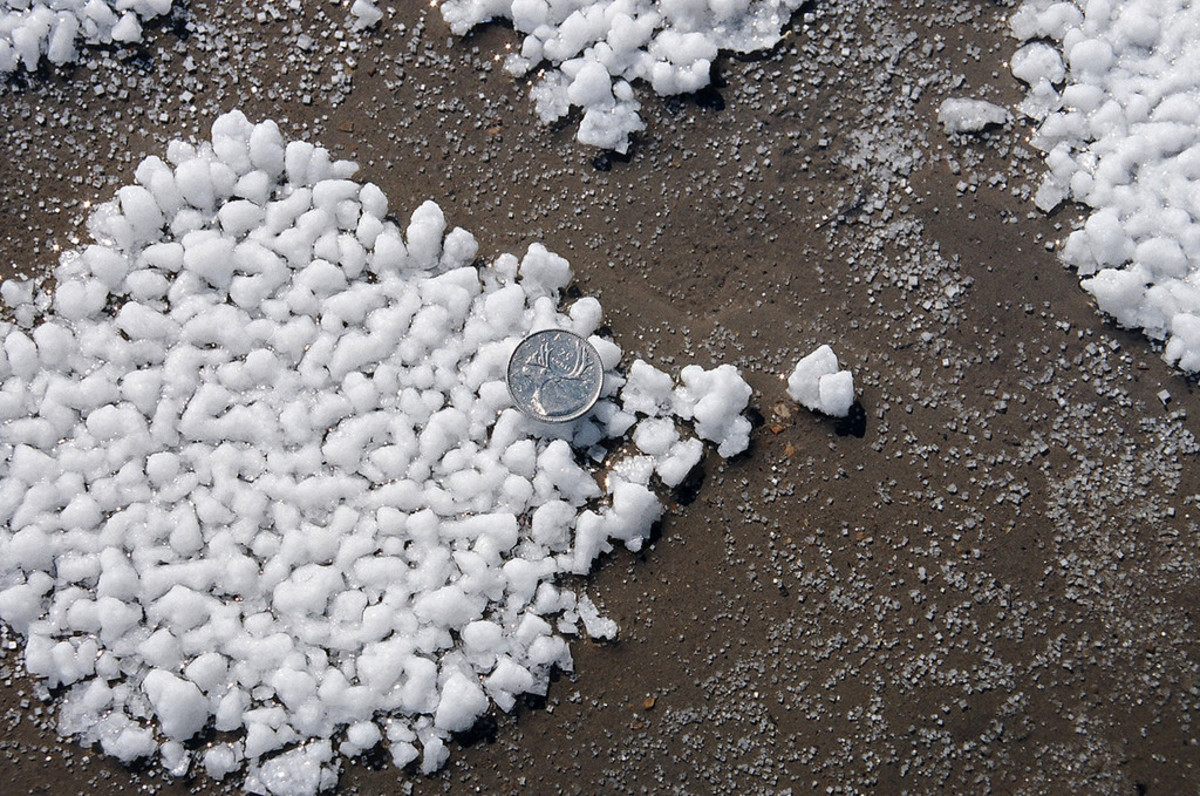When driveways glaze over and sidewalks turn treacherous, the choice usually comes down to two winter workhorses: rock salt (sodium chloride) and calcium chloride.
This guide breaks down Rock Salt vs. Calcium Chloride in plain, practical terms—how cold each can go, how quickly they work, what they cost, and the trade-offs for pets, plants, and concrete longevity.
Think of it as your concise, real-world comparison of Sodium Chloride vs Calcium Chloride—grounded in actual performance, not just lab data.
By the end, readers will be able to View all key factors and confidently choose the right deicer for their specific winter conditions.
Temperature ranges where each deicer works best
Rock salt is the winter standby because it’s affordable and effective in common freeze-thaw conditions. But it does have a temperature floor.
- Rock salt (sodium chloride, NaCl): Most effective around 30°F down to about 15–20°F (-9 to -6°C). Below that, it struggles to form brine quickly enough to break the bond between ice and pavement. It can still improve traction at lower temps when used with abrasives (like sand), but melting slows dramatically.
- Calcium chloride (CaCl2): Performs in much colder weather, often effective down to about -25°F (-32°C). It generates heat as it dissolves (an exothermic reaction), which helps it punch through hard pack and kickstart melting when the air feels bitter.
A practical way to think about it: at 25–32°F, rock salt usually does the job efficiently on driveways and sidewalks. In the teens, calcium chloride starts to show its advantage. In single digits and below, calcium chloride isn’t just faster, it’s the only one of the two that remains reliably active.
Tip: Pre-treating (anti-icing) before a storm with a light application helps both products work better, especially near their lower temperature limits.
Cost differences between rock salt and calcium chloride
Rock salt wins on sticker price. In most markets, a 50‑lb bag of rock salt costs a fraction of a comparable bag of calcium chloride pellets or flake. Typical retail ranges (which vary by season and region):
- Rock salt: often the budget pick per pound
- Calcium chloride: usually 2–4x the price of rock salt per pound
The twist is cost per result. Calcium chloride often requires less product to achieve the same melt, especially in colder conditions. When temperatures drop below ~20°F, a homeowner may burn through two or three times more rock salt trying to keep pace, erasing some of the initial savings.
If the property sees mostly mid-to-high 20s, rock salt is the value leader. For frequent cold snaps in the teens and single digits, calcium chloride can be cheaper by the square foot due to lower application rates and fewer reapplications.
How quickly each material melts snow and ice
Speed matters during a morning rush or a late-night refreeze. Calcium chloride is typically faster because of chemistry: when it dissolves, it releases heat. That quick heat jump-starts brine formation and breaks the ice–pavement bond.
- Calcium chloride: Works rapidly across a wide temperature range, including very cold conditions. Pellets burrow into ice, creating channels that lift and fracture the sheet. On a 12°F morning, calcium chloride generally clears compacted footpaths noticeably quicker.
- Rock salt: Needs moisture to dissolve and create brine: it doesn’t create its own heat. At 25–32°F with some sun or light traffic, it performs well and is quick enough for typical residential use. As temperatures dip into the teens, response time slows and may require agitation (shoveling, scraping) or additives to keep pace.
Pro move: Pre‑wetting rock salt with brine reduces bounce and speeds brine formation, narrowing the speed gap. Many commercial crews pre‑wet or use treated salt to get a faster start without switching entirely to calcium chloride.
Environmental impact of chloride-based products
Both products are chloride salts, and chlorides don’t disappear, they accumulate. Runoff can elevate chloride levels in soil and waterways, stressing vegetation and aquatic life. A few practical distinctions help:
- Sodium load vs. calcium load: Rock salt introduces sodium, which can displace essential nutrients in soil and affect structure, making it harder for plants to uptake water. Calcium chloride adds calcium, which is less disruptive to soil structure, but the chloride ion remains a concern for both.
- Vegetation burn: Over-application of either can scorch turf and ornamentals. Calcium chloride’s higher efficiency at low temperatures may mean less total product is needed, which can help reduce plant stress if application is conservative.
- Corrosion and infrastructure: All chloride salts are corrosive to metals and can contribute to concrete scaling over time, especially when over-applied. Sealed, air‑entrained concrete fares better.
Smarter use matters more than brand:
- Apply only what’s needed: avoid the “more is better” trap.
- Remove loose snow first to lower the dose.
- Sweep up residual pellets after a melt and re‑use before the next event.
- Store bags sealed and off the ground to prevent leaching.
If environmental protection is top priority, consider using calcium chloride sparingly during cold snaps and switching to sand for traction when melting isn’t essential. Non‑chloride options (e.g., acetates) exist but are pricier and less available for homeowners.
Safety considerations for pets and property surfaces
Pets: Chloride salts can irritate paw pads and, if ingested while grooming, upset stomachs. Calcium chloride pellets, because they generate heat when dissolving, can sting sensitive paws.
Pet‑friendly habits:
- Use the minimum effective amount and break up clumps.
- Keep a door‑side towel or paw rinse to remove residue after walks.
- Consider dog booties on the coldest days or along heavily treated routes.
- Store products securely: avoid piles where pets might lick.
Property surfaces: Fresh concrete (generally under 12 months old) is vulnerable to chemical and freeze‑thaw damage. All chlorides can accelerate corrosion of metals (rails, door tracks, vehicles) and degrade certain masonry and natural stone.
Surface protection tips:
- Avoid deicers on new concrete: use sand for traction.
- Seal older concrete and re‑seal per label schedules.
- Sweep excess granules once melting is achieved.
- Place mats at entries to keep granules off interior floors.
If surface preservation outranks speed, conservative dosing of calcium chloride in deep cold and rock salt near freezing, combined with fast shoveling, strikes a safer balance.
Situations where blended products provide better results
Blends pair the affordability of rock salt with the low‑temperature punch of calcium chloride (and sometimes magnesium chloride or corrosion inhibitors). Common advantages:
- Wider effective temperature range than rock salt alone
- Faster startup and less bounce/scatter when pre‑treated or coated
- Potentially lower overall application rates versus straight rock salt
Real‑world wins for blends:
- Mixed‑temperature winters: 20s this week, single digits the next.
- High‑traffic walkways: faster bond‑breaking reduces slip risk during rush periods.
- Sensitive landscapes: lower doses to achieve melt can mean less chloride overall.
Some blends include organics (e.g., beet distillates) to help pellets stick and reduce scatter, or corrosion inhibitors to be gentler on metals. Read labels closely, formulations vary widely, so performance does too.










